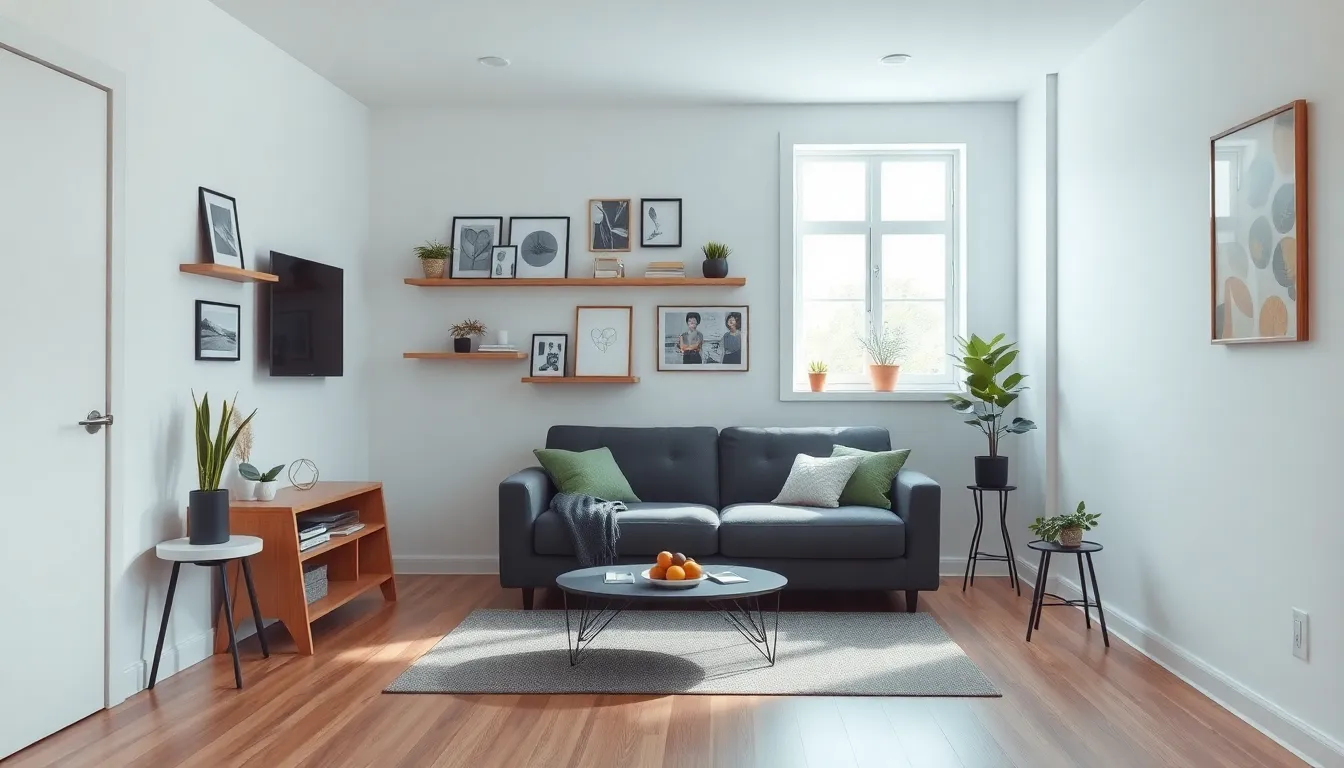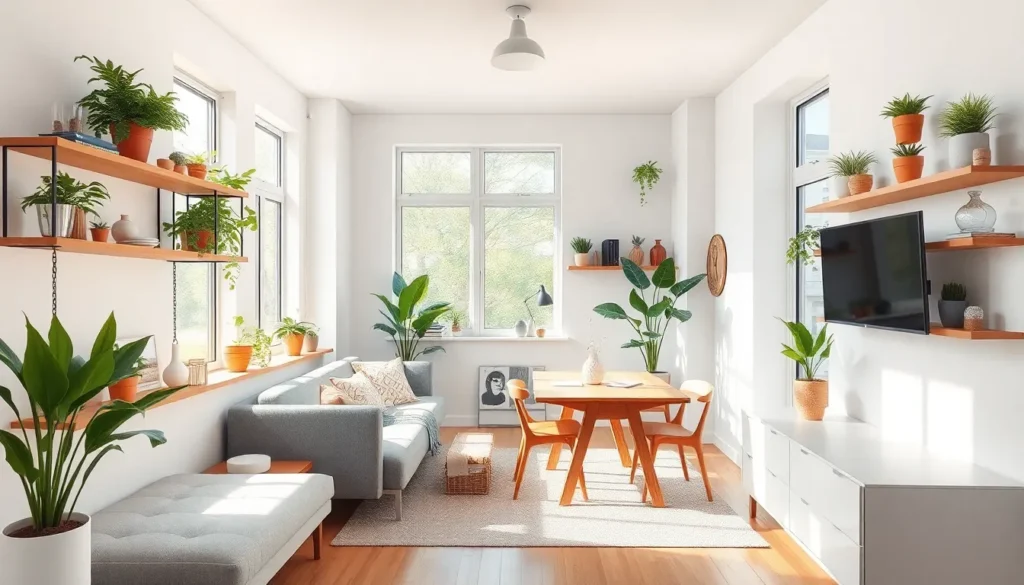In a world where square footage often feels like a luxury, space optimization is the superhero we never knew we needed. Picture this: a cozy apartment that feels like a TARDIS, magically expanding to fit all your belongings while still leaving room for that beloved couch. It’s not just a dream; it’s the art of making every inch count.
Table of Contents
ToggleUnderstanding Space Optimization
Space optimization significantly enhances utility and organization within confined living spaces. It focuses on efficient layouts and smart storage solutions that transform how one interacts with their environment.
Definition of Space Optimization
Space optimization refers to the strategic arrangement and use of available space to maximize functionality. This practice includes organizing furniture, utilizing vertical space, and implementing creative storage solutions. Designers aim to create environments that feel spacious while accommodating various needs. Applying effective space optimization techniques allows for a harmonious balance between comfort and practicality.
Importance in Various Fields
Space optimization holds value across multiple sectors. In residential areas, optimized layouts improve daily living experiences by increasing comfort and accessibility. In commercial settings, enhanced space usage can lead to greater productivity and employee satisfaction. Architects and interior designers often utilize space optimization principles to ensure diverse spaces meet their intended purposes efficiently. Retail spaces benefit from optimized arrangements by encouraging customer flow and maximizing product visibility.
Techniques for Space Optimization

Space optimization employs various techniques to enhance functionality and organization in small living areas. Creative methods transform limited square footage into practical, welcoming environments.
Design Strategies
Effective design strategies focus on maximizing usable area. Open floor plans encourage a seamless flow between spaces while allowing for easy movement. Multifunctional furniture serves dual purposes, such as a sofa that converts into a bed. Utilizing vertical storage like wall shelves increases available floor space. Decluttering also plays a significant role; regularly assessing belongings helps create a clean and organized environment.
Technological Solutions
Innovative technological solutions offer advanced options for space optimization. Smart home devices automate tasks, freeing up time and physical space. For example, smart storage systems allow users to track and manage belongings efficiently. Digital interior design tools enable visualization of layouts, ensuring optimal furniture placement. Apps that measure room dimensions and suggest best-fit furniture can streamline the shopping experience. Embracing these technologies enhances efficiency while creating a more functional living environment.
Benefits of Space Optimization
Space optimization offers numerous advantages that enhance both daily living and commercial environments. From cost savings to improved efficiency, these benefits prove invaluable.
Cost Savings
Implementing space optimization techniques minimizes expenses related to housing and utilities. Smaller spaces usually lead to lower energy costs, resulting in reduced monthly bills. Businesses can also achieve financial benefits through optimized layouts that enhance operational efficiency. By utilizing vertical and hidden storage, companies reduce the need for larger retail spaces, directly impacting rent and overhead costs. Maximizing square footage often leads to better resource management, allowing for reinvestment in growth opportunities.
Improved Efficiency
Enhanced efficiency results from strategic space organization and arrangement. Individuals can navigate smaller living areas with greater ease when furniture arrangement streamlines foot traffic. In workspaces, efficient design fosters collaboration, boosting overall productivity. Smart technology like digital design tools further assists in achieving optimal layouts, allowing quick adjustments based on specific needs. Effective storage solutions also create more accessible environments, eliminating time wasted searching for items and improving the overall daily flow.
Challenges in Space Optimization
Space optimization faces significant challenges that can hinder functionality and comfort in living areas. Understanding these obstacles helps in developing better strategies.
Common Obstacles
Inefficient layouts often reduce usable space, leading to cramped conditions. Limited budgets restrict the ability to implement advanced solutions, resulting in suboptimal designs. Personal clutter complicates organization, making it hard to maximize available space. Additionally, inadequate storage options contribute to disarray, preventing efficient use of square footage. Lastly, resistance to change can create barriers, as individuals may struggle to adapt to new arrangements.
Solutions to Overcome Challenges
Evaluating layouts through professional consultations can reveal underutilized areas. Implementing multifunctional furniture promotes versatility while optimizing space. Regular decluttering sessions enhance organization and prevent buildup of excess items. Utilizing vertical space by adding shelves or hooks maximizes storage options effectively. Engaging with smart technology, such as apps for design planning, streamlines the process of creating efficient layouts. Encouraging flexibility and open-mindedness towards change fosters an environment conducive to effective space optimization.
Space optimization transforms small living areas into functional and inviting environments. By embracing innovative design strategies and smart storage solutions, individuals can maximize every inch of their space. This approach not only enhances comfort but also improves daily living experiences and productivity in various settings.
Overcoming challenges like clutter and inefficient layouts is achievable with the right mindset and tools. With the integration of technology and creative design, anyone can create a space that feels larger and more organized. Ultimately, space optimization is about making the most of what’s available, leading to a more efficient and enjoyable living or working environment.






